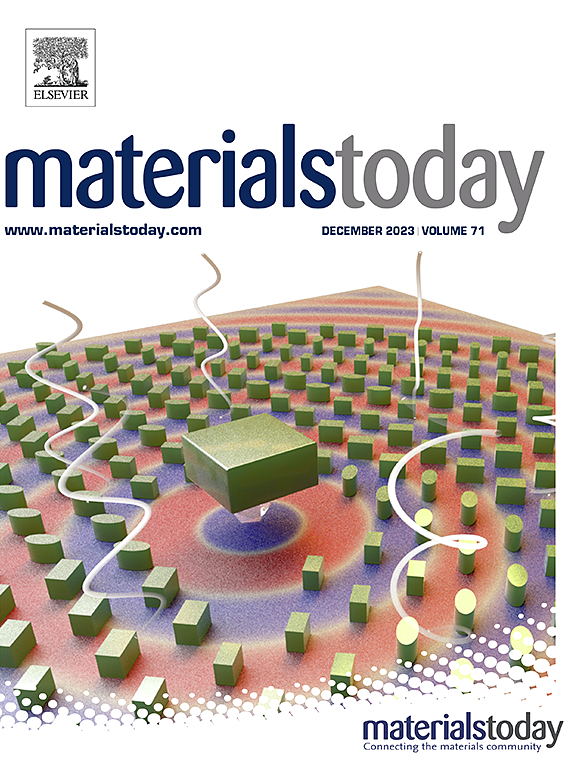Thermal diode-like metafabric with tunable asymmetric structure for continuous personal cooling
IF 22
1区 材料科学
Q1 MATERIALS SCIENCE, MULTIDISCIPLINARY
引用次数: 0
Abstract
Personal cooling textiles that can ensure human health and alleviate energy crises have been fabricated from various mechanisms including radiation, evaporation, and convection. However, there exists a significant challenge in achieving continuous cooling solely through thermal conduction especially in a changing environment. We report a novel strategy to create a thermal diode-like metafabric (TDM) with a tunable asymmetric structure that enables unidirectional thermal conductivity. The premise of the design is that the TDM dissipates body heat via the dense layer and insulates against environmental heat with the fluffy layer, making the heat dissipation function like a “thermal diode”. The resulting TDM can achieve a continuous cooling of 3.5 °C compared to cotton fabric, solely through thermal conduction. Additionally, it also integrates properties of ultrahigh air and moisture permeability, shape memory, and mechanical durability. The successful synthesis of such fascinating material may offer new perspectives on the design and advancement of thermal management materials in various fields.

具有可调非对称结构的热二极管状元纤维,用于持续冷却个人体温
利用辐射、蒸发、对流等多种机制制造出了保障人体健康、缓解能源危机的个人制冷纺织品。然而,仅通过热传导实现连续冷却存在重大挑战,特别是在不断变化的环境中。我们报告了一种新的策略来创建一个热二极管样的超结构(TDM)具有可调的不对称结构,使单向导热。设计的前提是TDM通过致密层散发人体热量,通过蓬松层隔绝环境热量,使散热功能像一个“热二极管”。与棉织物相比,仅通过热传导,TDM可以实现3.5°C的连续冷却。此外,它还具有超高的透气性和透湿性、形状记忆性和机械耐久性。该材料的成功合成将为热管理材料在各个领域的设计和发展提供新的视角。
本文章由计算机程序翻译,如有差异,请以英文原文为准。
求助全文
约1分钟内获得全文
求助全文
来源期刊

Materials Today
工程技术-材料科学:综合
CiteScore
36.30
自引率
1.20%
发文量
237
审稿时长
23 days
期刊介绍:
Materials Today is the leading journal in the Materials Today family, focusing on the latest and most impactful work in the materials science community. With a reputation for excellence in news and reviews, the journal has now expanded its coverage to include original research and aims to be at the forefront of the field.
We welcome comprehensive articles, short communications, and review articles from established leaders in the rapidly evolving fields of materials science and related disciplines. We strive to provide authors with rigorous peer review, fast publication, and maximum exposure for their work. While we only accept the most significant manuscripts, our speedy evaluation process ensures that there are no unnecessary publication delays.
 求助内容:
求助内容: 应助结果提醒方式:
应助结果提醒方式:


